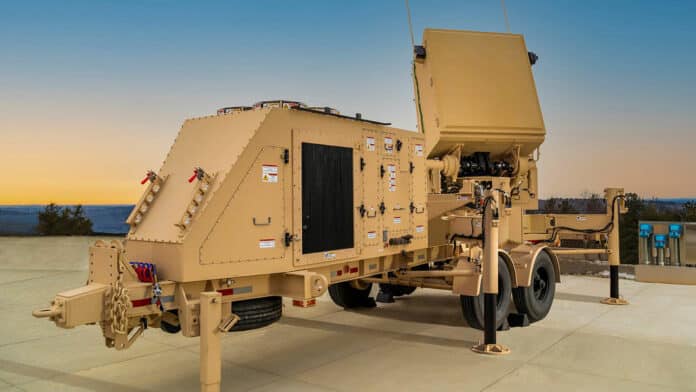The U.S. military relies on surface-to-air missile systems to protect its strategic assets on the ground from aerial attacks.
To modernize these systems, a $7 million contract has been awarded to Raytheon for the advanced development and assessment of the GhostEye MR radar system. With its 360-degree surveillance and fire control sensor, the GhostEye MR is designed to detect, track, and identify a wide variety of threats, including cruise missiles, drones, and fixed- and rotary-wing aircraft.
The funding consists of a contract from the Rapid Prototyping Program (RPP) of the Office of the Secretary of Defense and the SDPE office of the U.S. Air Force Research Lab. The funding will support continued radar development and then an operational assessment at White Sands Missile Range later this year.
“This government support confirms the growing relevance and demand for the capabilities of GhostEye MR, as nations around the globe look to bolster their air defense,” said Tom Laliberty, president of Land & Air Defense Systems at Raytheon, in a media statement. “Partnering with DoD, Air Force, and Kongsberg, we will showcase the sensor’s range of capabilities against a multitude of emerging threats.”
GhostEye MR helps to counter sophisticated long-range mass attacks. It is adaptable to multiple missions: integrated air and missile defense, counter-UAS, and defense of critical infrastructure, such as air bases.
While GhostEye MR can operate as a standalone radar, it is also seen as a future sensor for the National Advanced Surface-to-Air Missile System (NASAMS), a highly adaptable medium-range air defense solution. Introduced in 2021, the radar provides increased range and altitude coverage to expand the defended-area capabilities of NASAMS.
The experiment at White Sands will assess the operational performance of GhostEye MR, with the radar providing effective surveillance cues and integrating with the combat-proven NASAMS air defense system.
Last September, the Strategic Developmental Planning & Experimentation (SDPE) office’s successful air base air defense experiment in Andøya, Norway, showcased NASAMS’ ability to engage and intercept various advanced aerial threats using multiple Raytheon missile types.
Additionally, GhostEye MR leverages commonality with the Lower Tier Air and Missile Defense Sensor (LTAMDS) that Raytheon is building for the U.S. Army. Both sensors share a baseline of advanced technologies, including active electronically scanned array (AESA), which boosts detection, targeting, and tracking – and military-grade gallium nitride (GaN) – which strengthens the radar signal and enhances its sensitivity for longer range, higher resolution, and increased capacity.
